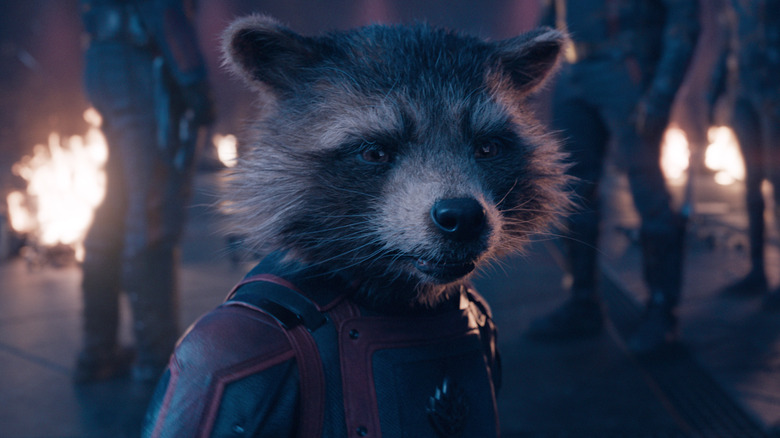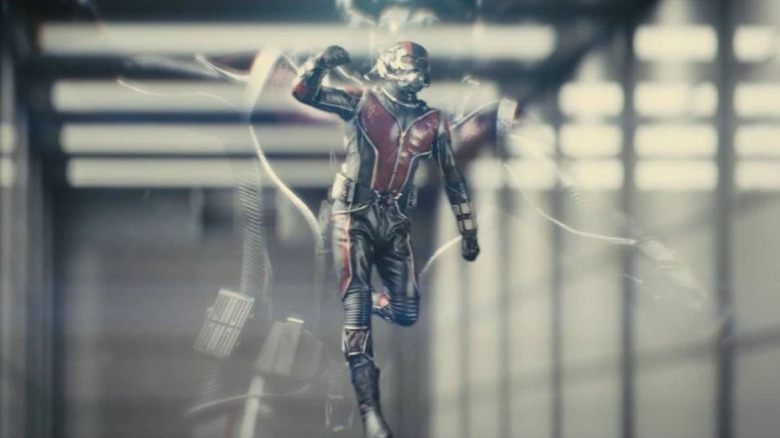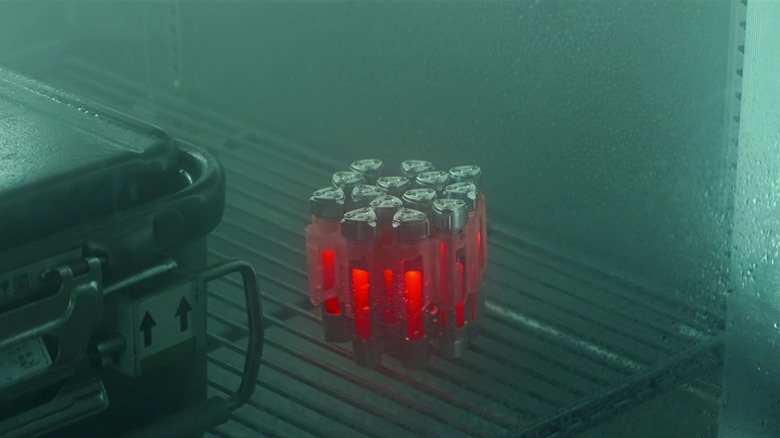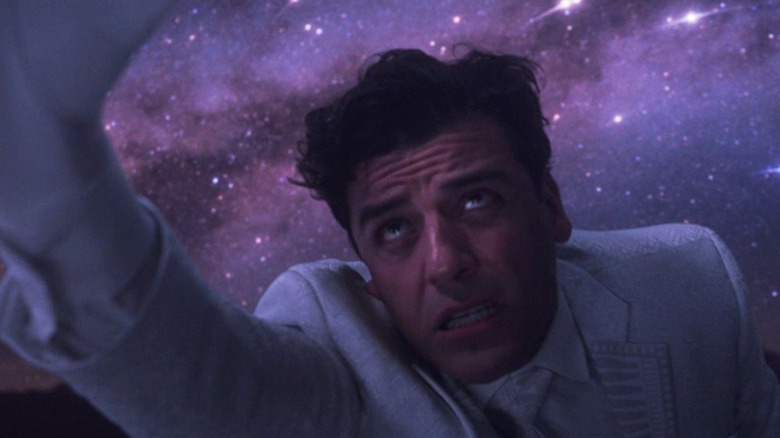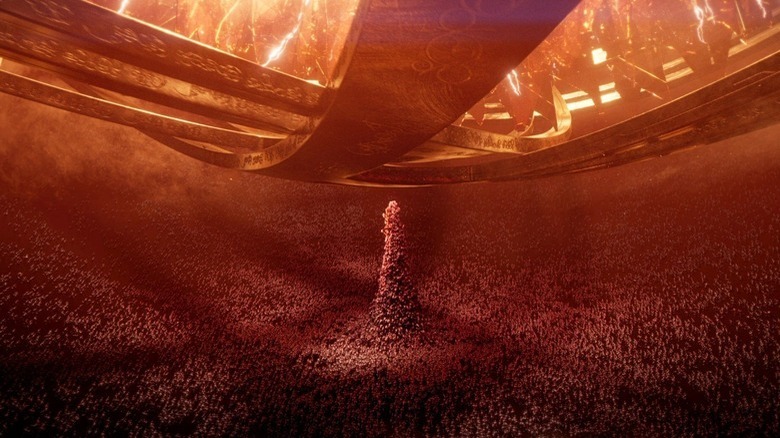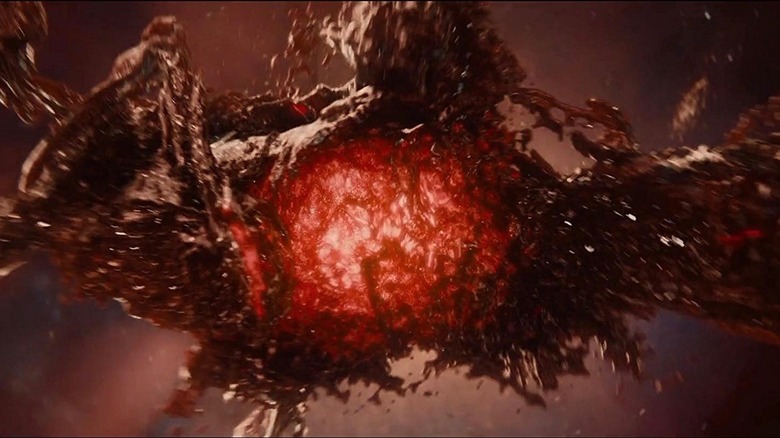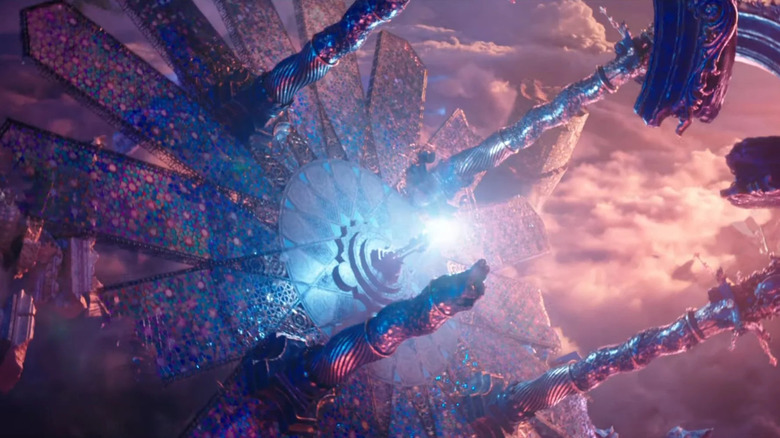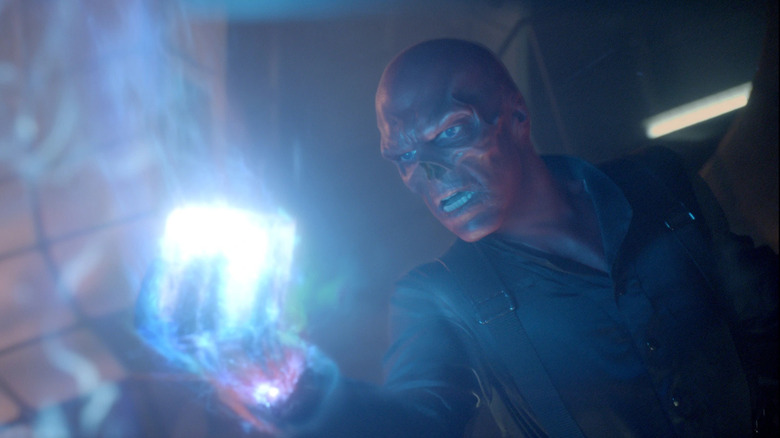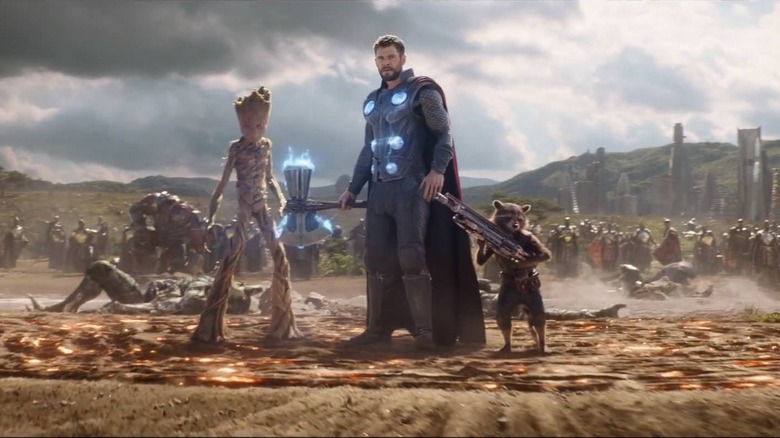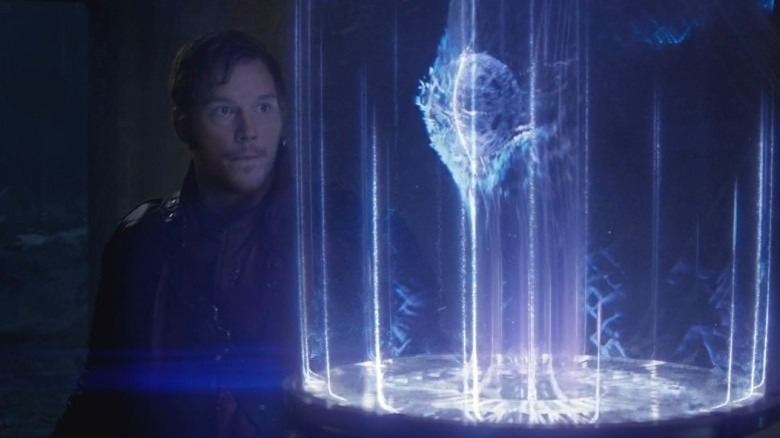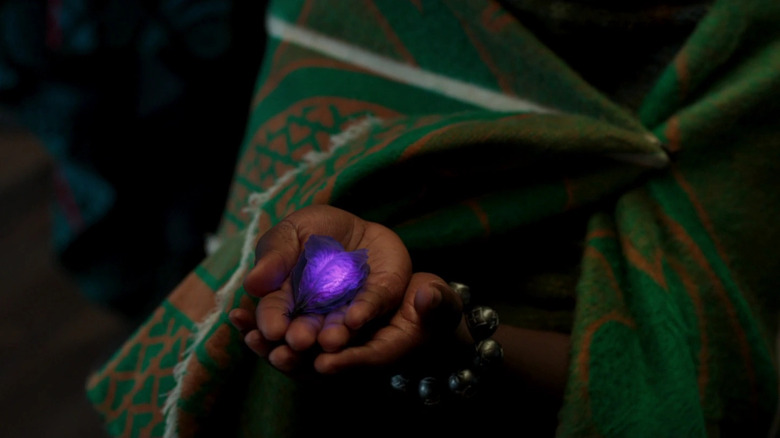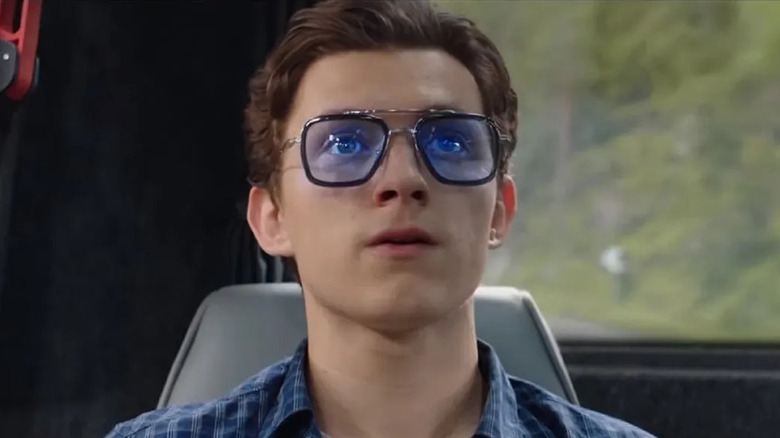The 12 Best MacGuffins In The MCU
In film, the term "MacGuffin" refers to a common trope in storytelling that involves an object that is introduced for the sole purpose of propelling the plot forward. That object, the MacGuffin, is usually introduced early on in the story, with either the protagonists or antagonists of the story chasing after or trying to protect said object. Typically, though not always, a MacGuffin is somewhat interchangeable, as the object itself is less important than the conflict it creates, with the MacGuffin often becoming less prominent as the story progresses, falling off mostly by the third act. Popular examples often cited are Marsellus Wallace's briefcase in "Pulp Fiction" or the microfilm in "North by Northwest."
With 32 films and eight shows now under its belt, its no surprise that the Marvel Cinematic Universe has employed this popular narrative device on more than a few occasions. In a universe with many iconic magical objects, a MacGuffin hunt is a particularly natural fit for creating conflict and keeping characters motivated to move the plot forward. While the term "MacGuffin" was originally used only to describe an object that audiences wouldn't care much about outside the plot, the definition has broadened somewhat in popular culture thanks in large part to objects like the Ark of the Covenant in "Raiders of the Lost Ark." Here are a dozen such MacGuffins — important or otherwise — from the MCU.
Pym Particles (Ant-Man)
Pym Particles are first introduced into the MCU in the first "Ant-Man" film. Discovered by renowned scientist and former superhero Hank Pym, the Pym Particles are able to shrink and enlarge objects. Hank Pym used the Pym Particles to fight as the superhero Ant-Man before losing his wife Janet during a dangerous mission. Years later, Pym's greedy protégé, Darren Cross, is looking to once again perfect the shrinking process, using Pym Particles in order to make money selling it for military application. To keep the particles out of Cross' hands and prevent their use as deadly weapons of war, Hank hires a former thief, Scott Lang, to break into Cross' laboratory to steal the suit containing the Pym Particles.
This one may be a bit of a stretch on the classic MacGuffin trope, since Hank Pym and Scott Lang both use Pym Particles in the Ant-Man suit, a vital and important plot device that plays a major role in the film (and its sequels). However, the Pym Particles themselves are still an extremely vague item used mostly to push the plot forward whenever it needs to set up conflict between the characters.
Red Dust (Black Widow)
After viewers are introduced to Natasha Romanoff's found family in a powerful flashback scene, the plot of "Black Widow" kicks off in earnest when Nat's sister, Yelena Belova, is freed from the Red Room's mind control after being exposed to a synthetic gas called Red Dust. Once free, she sends a sample of the Red Dust to Natasha in hopes that she will know how to create an antidote and help other Black Widows. This reunites Natasha with all of the members of her Red Room family, as they work to free the other Black Widows from the control of the Red Room and its cruel leader Dreykov.
In "Black Widow," the Red Dust serves as a classic MacGuffin, which is fitting since MacGuffins are most commonly used in thrillers such as spy films. Introduced early on, the Red Dust is vital to launching the plot, and is sought by both the heroes and villains. As the film progresses, the Red Dust becomes more of an afterthought, with the film's narrative shifting more towards Natasha's quest to take down the Red Room once and for all, rather than obtaining or using more Red Dust. Most of the Widows are ultimately freed when Yelena Belova uses a Red Dust bomb on them, but their fate would have been the same even without it, as Dreykov's death frees the Widows from his control.
Medjay Star Map (Moon Knight)
The Medjay Star Map is first introduced in the third episode of "Moon Knight," titled "The Friendly Type." Protagonist Marc Spector is looking to hunt down Ammit's tomb, but is coming up empty on leads. Luckily, during the trial of the Gods called by Khonshu, Spector is told by fellow avatar Yatzil that a Medjay named Senfu had been tasked with recording the location of Ammit's tomb, and made a map. After some digging, Spector discovers that the map is likely in the possession of Anton Mogart, a black market collector and dealer. Although he has to battle Mogart's men after a trade deal goes sour, Spector manages to steal the map, and after Khonshu turns back the night sky, he uses the map to locate the tomb.
While the Medjay Star Map is only relevant in one episode of "Moon Knight," it still serves as an important plot catalyst, in that it both sets the protagonists on a smaller quest that takes up much of the episode's runtime, and also allows them to locate the more important object, Ammit's tomb. Like many MacGuffins, the map itself is of little importance or interest to the viewers, but the adventure and conflict it sets up are invaluable to the story.
Multiversal Power Core (Ant-Man and the Wasp: Quantumania)
Much like the first "Ant-Man" film, a big section of "Ant-Man and the Wasp: Quantumania" revolves around the protagonists trying to obtain a generic science device. The biggest difference is that in this sequel, Scott Lang is not being employed to do so by his mentor Hank Pym, but rather the film's villain, Kang the Conqueror, who has taken Scott's daughter Cassie as a hostage. Like Scott and his family, Kang has found himself trapped in the Quantum Realm after his Multiversal Power Core was destroyed years ago by Janet Van Dyne, and now he needs the master thief Scott Lang to retrieve it.
Similarly to Pym Particles, the Multiversal Power Core is a vaguely explained device that exists primarily for things in the plot to happen. However, the Multiversal Power Core is arguably a much better example of a MacGuffin in that it isn't used regularly to power the suit of the protagonist. It does, however, lead to fun, exciting sequences, such as when Scott begins to multiply near the core. The search for the Multiversal Power Core also helps to set up the final confrontation of the film, which pits Scott and his family against Kang.
Aether (Thor: The Dark World)
The Aether is a liquid substance that becomes absorbed by Dr. Jane Foster during the events of "Thor: The Dark World," leading to the film's overarching plot as well as the Second Dark Elf Conflict. Once Jane absorbs the Aether, she's hunted by the Dark Elf Malekith, who had attempted to use the weapon ages ago to battle Asgard while it was still under the rule of Odin's father, Bor. Thor initially tries to protect Jane by hiding her in Asgard, but after Malekith attacks the city and kills Thor's mother, they decide to face him head on and attempt to remove the Aether from Jane in order to destroy it.
Longtime MCU fans will likely know that the Aether is revealed in a post-credits scene to be one of the Infinity Stones — the Reality Stone, to be specific, which ultimately plays a much larger, more important role in Marvel's Infinity Saga. For the duration of "Thor: The Dark World," however, the Aether is merely a simple MacGuffin. It isn't given clearly defined rules, and only really exists for Malekith to somehow gain the power to take over the universe. While it's never really explained how the Aether will do that, it still serves an important role in motivating Malekith to move against the heroes.
Book of Vishanti (Doctor Strange in the Multiverse of Madness)
The Book of Vishanti is first introduced in the opening scene of "Doctor Strange in the Multiverse of Madness." An alternate universe version of Stephen Strange is attempting to find the book to protect America Chavez, a young woman with the power to open portals between universes, from monsters that are chasing her. Although that version of Doctor Strange is killed, America Chavez is able to make her way to Earth 616 (in the MCU's primary universe) and meet up with that Earth's Stephen Strange. Later, it is revealed that the Book of Vishanti is considered to be the antihesis of the Darkhold, an evil book being used by Scarlet Witch to kill America Chavez and take her powers, and that using it may be the only way to stop the Scarlet Witch.
Like many classic MacGuffins, the Book of Vishanti, and the protagonist's hunt for the book, is introduced early in the film. However, in a departure from many MacGuffin hunt films, the search for the book doesn't pick up again until well into the second act. After the Doctor Strange that was originally paired with America Chavez dies, the remaining first act is mainly spent trying protect her from Wanda Maximoff. When the MacGuffin hunt does pick back up, the Book of Vishanti fits the mold of a classic MacGuffin perfectly. In fact, the book is never even used, as Scarlet Witch destroys it just after it's found.
The Tesseract (Captain America: The First Avenger)
The Tesseract is one of the earliest magical objects introduced into the MCU, making its debut in "Captain America: The First Avenger." The film opens with the main villain of the story, Red Skull, discovering the Tesseract in a church in Norway in 1943. The Tesseract is said to contain untold powers, and Red Skull gives it to a Hydra scientist, Arnim Zola, to use to level up their weapons. Captain America, who forms a team to take down Hydra and the Red Skull, end up having to work to reclaim the magical device from Hydra's clutches. In the end, Captain America seemingly sacrifices himself by crashing the Red Skull's plane to avoid having the Tesseract fall into enemy hands.
Despite being seemingly destroyed, the Tesseract returns in several other Marvel films, and is ultimately revealed to be another Infinity Stone — in this case, the Space Stone. However, before this reveal, the Tesseract is more of a vague magical object, with undefined rules that audience are told can give its users all kinds of power, much like the Aether. Interestingly, in Marvel comics, the Tesseract doesn't exist. It is somewhat of an amalgamation of the Cosmic Cube and the Space Stone.
Stormbreaker (Avengers: Infinity War)
"Avengers: Infinity War" is the first half of a two-part finale that is the culmination of the entire Infinity Saga, and as such it weaves together so many characters and plotlines that it could be easy for a viewer to get lost in all that is happening. Much of the movie revolves around Thanos' hunt for the remaining Infinity Stones; while it may be easy to think of the Infinity Stones as MacGuffins, given that they are an object heavily sought by the villain for the majority of the film, the Infinity Stones are actually too well-defined and heavily used in the film's conflicts and events to be classified as one. However, the film still contains one MacGuffin: Thor's new weapon, Stormbreaker.
Thor lost his first hammer, Mjolnir, in "Thor: Ragnarok," after it was destroyed by his sister Hela. Despite learning that he no longer needs a hammer to use his powers as the God of Thunder, Thor decides he need a new "Thanos-killing" weapon before returning to Earth to take him on. His hunt for a new hammer takes up the majority of his storyline in the first two acts of the film, as he, Rocket, and Groot set out to find the great space forge on Nidavellir. But once he acquires Stormbreaker, the new weapon ceases to carry much importance, as Thor's story shifts to helping his friends in the Battle of Wakanda.
The Orb (Guardians of the Galaxy)
The Orb is another one of Marvel's Infinity Stones that starts as an object of seemingly little importance. In "Guardians of the Galaxy," the film opens with Star-Lord taking the orb from a desolate planet. However, it is revealed that he is not the only one looking for the orb, as several other parties — including the film's main villain, Ronan the Accuser — are also looking for the orb. Each party tries to obtain and hold on to the orb for as long as possible, with Star-Lord eventually joining forces with some of those other groups, including Thanos' daughter Gamora, to form the Guardians of the Galaxy.
Unlike the Aether and the Tesseract, it is revealed midway through the film that the orb contains the Power Stone. However, the stone itself doesn't really get any use until Ronan tries to acquire it at the very end, and the film mostly remains a MacGuffin hunt, with the villains trying to acquire the orb as the Guardians attempt to protect it. Writer-director James Gunn revealed that he came up with a lot of details surrounding the Infinity Stones at the last minute, and it seems clear in the first "Guardians of the Galaxy" that the stone was merely a catalyst to bring the team together and set them against the warmongering Ronan.
Heart-Shaped Herb (Black Panther)
The Heart-Shaped Herb is a plant that grows natively in Wakanda. For generations, Wakandans who held the mantle of the Black Panther would consume the herb in a liquified form. The herb would then allow them to visit the ancestral plane, and upon awakening, they would be imbued with the enhanced strength and reflexes needed to be Wakanda's protector.
In "Black Panther," Erik Killmonger, an exiled prince of Wakanda, believes that he has a birthright to challenge T'Challa for the mantle, and is seeking a way into Wakanda to access the herb and become the Black Panther. After being granted the powers of the Black Panther, he burns the rest of the herbs, so that the mantle will die with him.
While Killmonger's quest is really to become the Black Panther and king of Wakanda, none of that would be possible without the Heart-Shaped Herb. This motivates him to work with Ulysses Klaw to gain access to the Wakandan border. The Heart-Shaped Herb also serves as somewhat of a MacGuffin in the sequel, "Black Panther: Wakanda Forever." In the film, Shuri is looking to synthesize more Heart-Shaped Herbs following Killmonger's destruction of them, and a subplot involves her chasing after ways to bring the plant back.
E.D.I.T.H. (Spider-Man: Far From Home)
E.D.I.T.H., which stands for Even Dead, I'm The Hero, is an advanced AI given to Peter Parker after Tony Stark's death in "Avengers: Endgame." Mysterio, the villain of "Spider-Man: Far From Home," spends much of the film trying to acquire E.D.I.T.H. from Parker. As a former Stark Tech employee who felt slighted by the late Iron Man, Mysterio thinks he should be the one to have E.D.I.T.H. rather than Parker, who he still views as a child. While Parker gives E.D.I.T.H. to Mysterio willingly in the film's second act, he soon learns of Mysterio's villainous ways and battles him in the film's final act.
Unlike many MacGuffin hunts in which the villain is seeking an object from a hero, Mysterio spends much of the film trying to befriend Peter Parker in hopes of convincing him to give the technology up willingly. He does this by creating what seems like giant elemental monsters using drones, and then helps Peter, as Spider-Man, to fight them off. Peter, feeling a kinship with Mysterio, turns E.D.I.T.H. over, believing Mysterio to be a better hero. However, upon finding out that Mysterio is behind the attacks, Spider-Man decides to take him down. By that time, E.D.I.T.H. loses some importance, as Mysterio is mainly using the technology to enhance the drone attacks he's already committing.
Kill Switch Override Code (Guardians of the Galaxy Vol. 3)
The Kill Switch Override Code is a MacGuffin that appears in "Guardians of the Galaxy Vol. 3." The film opens with Adam Warlock attacking Knowhere and taking on the Guardians. He is targeting Rocket in particular, and after their battle, Rocket is severely injured and requires medical attention. However, they discover that Rocket was implanted with a kill switch that will go off if they try to administer any treatment. This sets the Guardians off on a mission to obtain the Kill Switch Override Code from Rocket's creator, the High Evolutionary.
Of all of the MCU's MacGuffins, the Kill Switch Override Code probably fits the most neatly into the classic definition of the famous film trope. It is an item introduced early in the film which is relatively meaningless to the audience but holds value for the characters, and kickstarts the main adventure. However, in the film's third act, the MacGuffin becomes unimportant and fades into the background — seeing as Rocket has already recovered by then — instead allowing the characters' conflict with the villain to take center stage.
